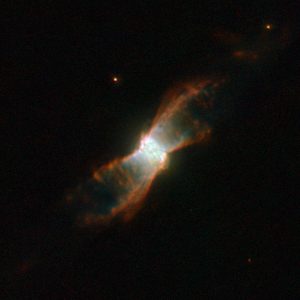Viaggio cosmico di una nebulosa a forma di farfalla

Il telescopio Hubble ha immortalato un’affascinante nebulosa planetaria, simile ad una delicata farfalla, denominata NGC 6881.
Situata nella costellazione del Cigno, è formata da una nube interna, che si estende per circa un quinto di anno luce, e da “ali” simmetriche che si espandono per circa un anno luce da un’estremità all’altra. La simmetria potrebbe essere dovuta ad una stella binaria nel centro della nebulosa.
NGC 6881 ha una stella morente nel suo nucleo, con una massa di circa il 60% della massa solare. È un esempio di nebulosa planetaria quadrupolare, formata da due paia di lobi bipolari orientati in direzioni differenti, e consistenti in quattro paia di anelli schiacciati.
La luce emessa dall’azoto è mostrata in rosso, dall’idrogeno in verde e dall’ossigeno in blu.
[ Barbara Bubbi ]
https://www.spacetelescope.org/images/potw1211a/
Credit: ESA/Hubble & NASA
Lascia un commento